Daimo B
Member
Registered: 20th Mar 00
User status: Offline
|
I so don't care today 
No real aim of this post other than to post space orientated images to see what things i've missed that are interesting. Explination is a bonus. Its a big old place out there, show us what we're missing....
Here is a meteor on Mars which "Opportunity" discovered on its route to Endeavour crater.

Endeavour crater is also on Mars, and it roughly 14 miles in diametre. The Rover is due to arrive there next year.

NASA's Spitzer Space Telescope has imaged a wild creature of the dark -- a coiled galaxy with an eye-like object at its center.The 'eye' at the center of the galaxy is actually a monstrous black hole surrounded by a ring of stars. In this color-coded infrared view from Spitzer, the area around the invisible black hole is blue and the ring of stars, white.
The galaxy, called NGC 1097 and located 50 million light-years away, is spiral-shaped like our Milky Way, with long, spindly arms of stars.
The black hole is huge, about 100 million times the mass of our sun, and is feeding off gas and dust, along with the occasional unlucky star. Our Milky Way's central black hole is tame in comparison, with a mass of a few million suns.
The ring around the black hole is bursting with new star formation. An inflow of material toward the central bar of the galaxy is causing the ring to light up with new stars. And, the galaxy's red spiral arms and the swirling spokes seen between the arms show dust heated by newborn stars. Older populations of stars scattered through the galaxy are blue. The fuzzy blue dot to the left, which appears to fit snugly between the arms, is a companion galaxy. Other dots in the picture are either nearby stars in our galaxy, or distant galaxies.
This image was taken during Spitzer's cold mission, before it ran out of liquid coolant. The observatory's warm mission is ongoing, with two infrared channels operating at about 30 degrees Kelvin (-406 degrees Fahrenheit).

Last shuttle mission shots


|
Cosmo
Member
Registered: 29th Mar 01
Location: Im the real one!
User status: Offline
|
If that is a meteor, then surely their should be a massive crater there?
|
Daimo B
Member
Registered: 20th Mar 00
User status: Offline
|
Thats what i'd think, but i get the impression its on a rock surface, covered in dust.
"What is this strange rock on Mars? Sitting on a smooth plane, the rock stands out for its isolation, odd shape, large size and unusual texture. The rock was discovered by the robotic Opportunity rover rolling across Mars late last month. Pictured above, Opportunity prepares to inspect the unusual rock. After being X-rayed, poked, and chemically analyzed, the rock has now been identified by Opportunity as a fallen meteorite. Now dubbed Block Island, the meteorite has been measured to be about 2/3 of a meter across and is now known to be composed mostly of nickel and iron. This is the second meteorite found by a martian rover, and so far the largest. Vast smooth spaces on Mars and Earth can make large meteorites stand out. Opportunity continues its trip across Meridiani Planum on Mars and is on schedule to reach expansive Endeavor Crater next year."
|
Cosmo
Member
Registered: 29th Mar 01
Location: Im the real one!
User status: Offline
|
Very scientific...poked.
|
Daimo B
Member
Registered: 20th Mar 00
User status: Offline
|
I got plenty more where that came from, jsut wanna see if anyone else has got stuff i've not seen.
|
alan-g-w
Member
Registered: 9th Nov 07
Location: Glasgow
User status: Offline
|
Horse head nebula:

The Horsehead Nebula (also known as Barnard 33 in bright nebula IC 434) is a dark nebula in the constellation Orion. The nebula is located just below Alnitak, the star furthest left on Orion's Belt, and is part of the much larger Orion Molecular Cloud Complex. It is approximately 1500 light years from Earth. It is one of the most identifiable nebulae because of the shape of its swirling cloud of dark dust and gases, which is similar to that of a horse's head. The shape was first noticed in 1888 by Williamina Fleming on photographic plate B2312 taken at the Harvard College Observatory.
The red glow originates from hydrogen gas predominantly behind the nebula, ionized by the nearby bright star Sigma Orionis. The darkness of the Horsehead is caused mostly by thick dust, although the lower part of the Horsehead's neck casts a shadow to the left. Streams of gas leaving the nebula are funneled by a strong magnetic field. Bright spots in the Horsehead Nebula's base are young stars just in the process of forming.
[Edited on 13-08-2009 by alan-g-w]
|
Daimo B
Member
Registered: 20th Mar 00
User status: Offline
|
Another of the Horsehead...
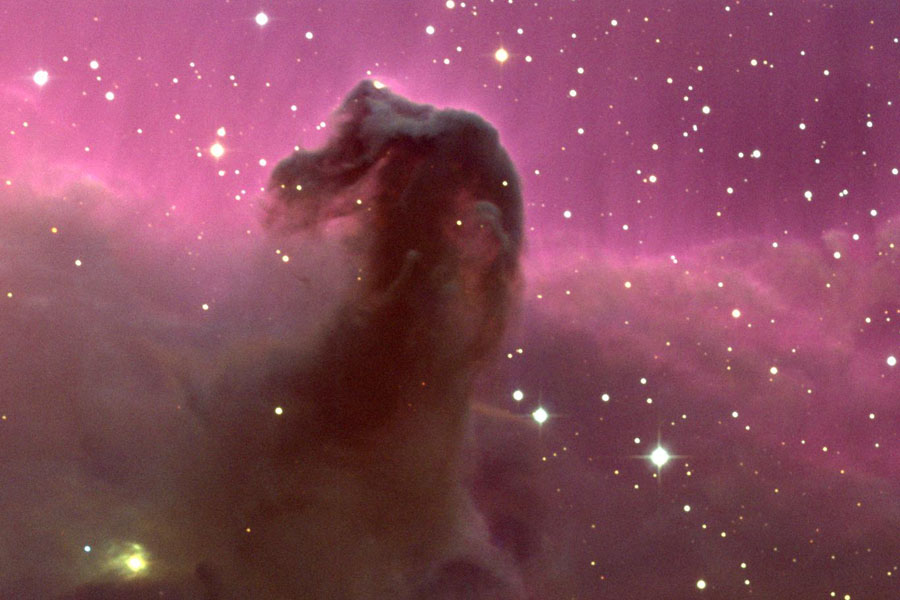
[Edited on 13-08-2009 by VXR]
|
Cosmo
Member
Registered: 29th Mar 01
Location: Im the real one!
User status: Offline
|
Looks more like a dragon tbh.
|
alan-g-w
Member
Registered: 9th Nov 07
Location: Glasgow
User status: Offline
|
Pretty cool all this stuff. But when I try to think about it too much I end up getting annoyed becasue of the simple fact that no-one, ever, will know everything there is to know about space.
I'm going to get a bite to eat and find a few more.
|
Daimo B
Member
Registered: 20th Mar 00
User status: Offline
|
Isn't it just.
We can see all this stuff.
We have what "WE" think is information and facts on them. Sure we can tell what minerals are in these space clouds and debries, but really, we can't even get to the F-inng moon properly, let alone anywhere else 
|
Ojc
Member
Registered: 14th Nov 00
Location: Reading: Drives : Clio 197
User status: Offline
|
Voyager 1 interests me for some reason.
The fact that it was launched in 1977 and is still transmitting data and is about to leave our solar system is just brilliant 

|
Ojc
Member
Registered: 14th Nov 00
Location: Reading: Drives : Clio 197
User status: Offline
|
http://en.wikipedia.org/wiki/Voyager_1
|
Daimo B
Member
Registered: 20th Mar 00
User status: Offline
|
Have you seen how far out they both are?
I was watching a program the other day on youtube about how the satalites all work around earth, low level, high level, ones, cassini, all the long orbit ones, and then it zoomed out and out to the voyagers.
Theres a dense field of magnetic pull around the earth, but as you go out it dissapears, and is replaces with other types of gasses in space, which both satalites should pull through within the next 10 years and will further give data about what happens to the space as you go further out.
I'll try to find it, its a good watch for 5 minutes.
|
Ojc
Member
Registered: 14th Nov 00
Location: Reading: Drives : Clio 197
User status: Offline
|
Yeah it does mention that on the Wikipedia page, Voyager 1 has passed through that now and is about to leave our Solar system.
|
Wrighty
Member
Registered: 28th Feb 04
Location: Howden
User status: Offline
|
i could spend all day on astronomy picture of the day, kinda makes you realise whats out there etc
|
Conway563
Member
Registered: 7th Jun 06
Location: Yate, Bristol
User status: Offline
|
All from the Hubble
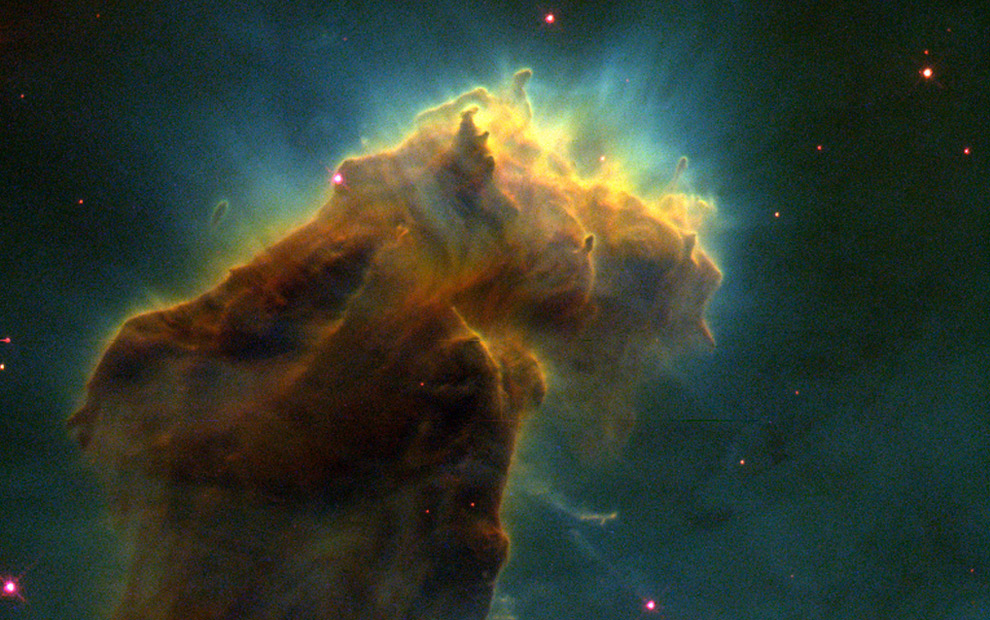
"Pillars of Creation" formation in the Eagle Nebula
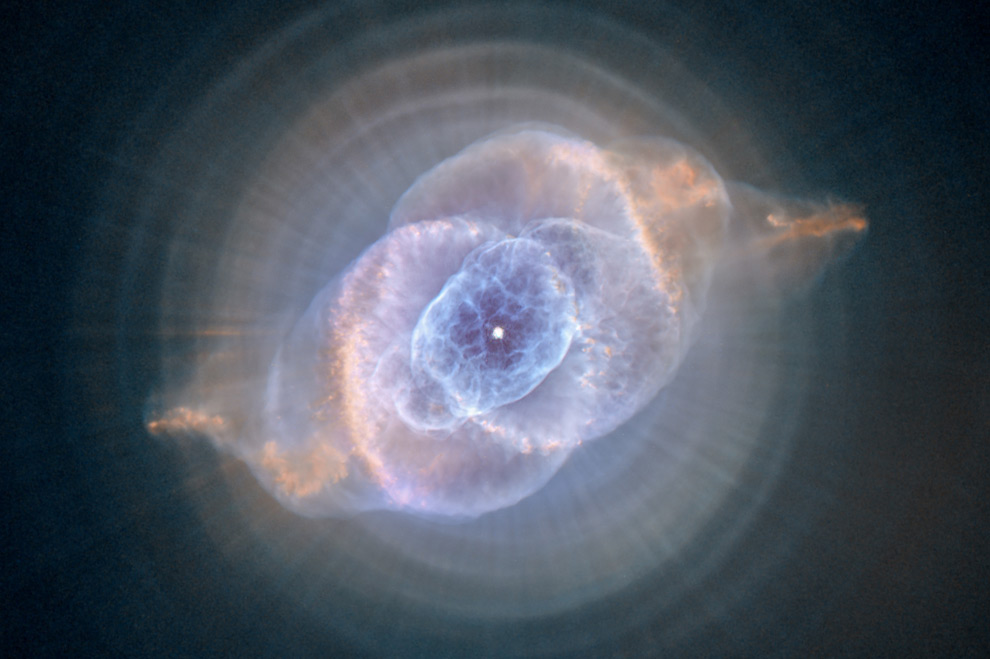
The Cat's Eye Nebula
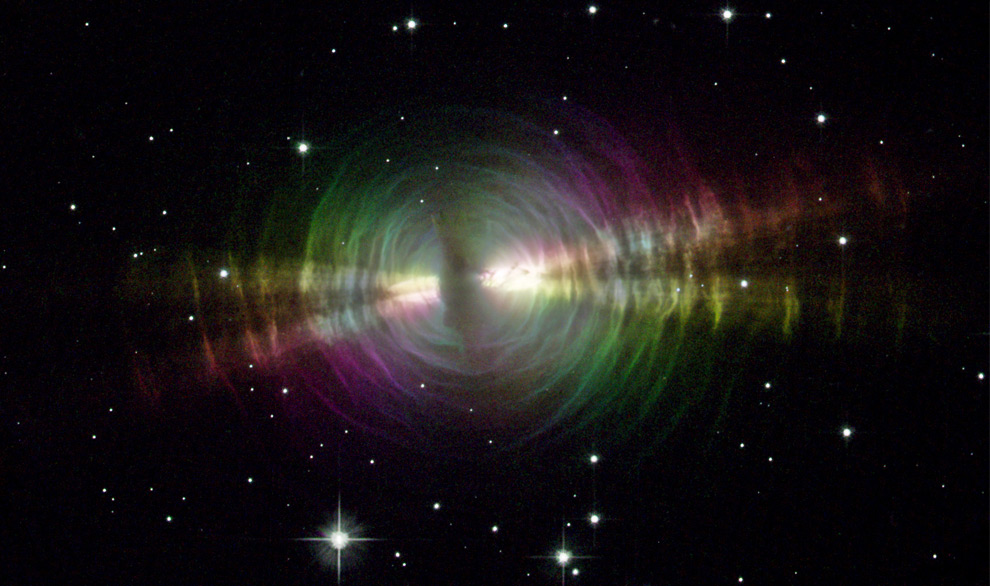
The Egg Nebula
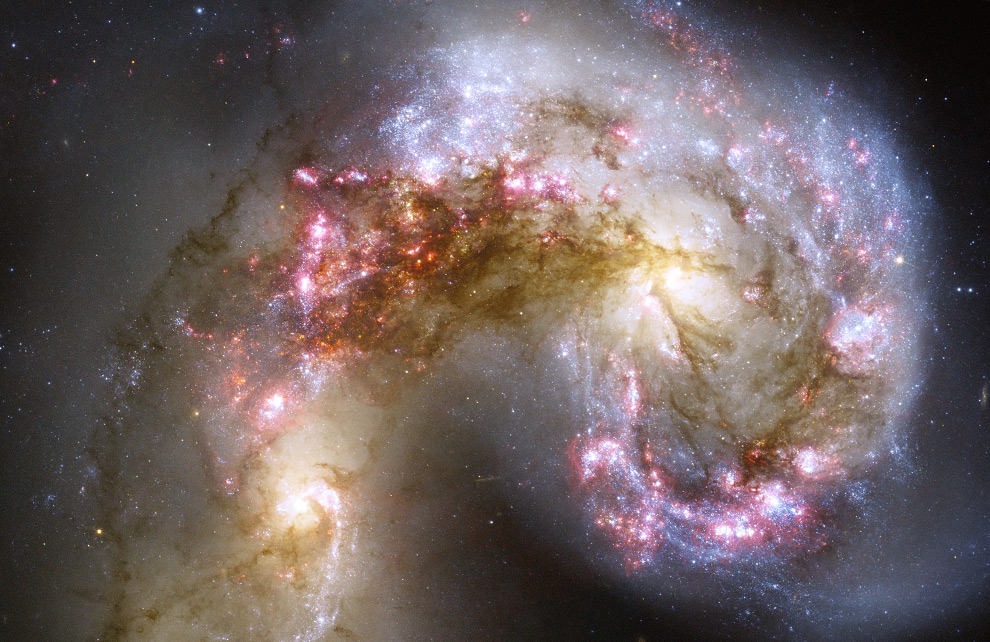
Antennae Galaxies
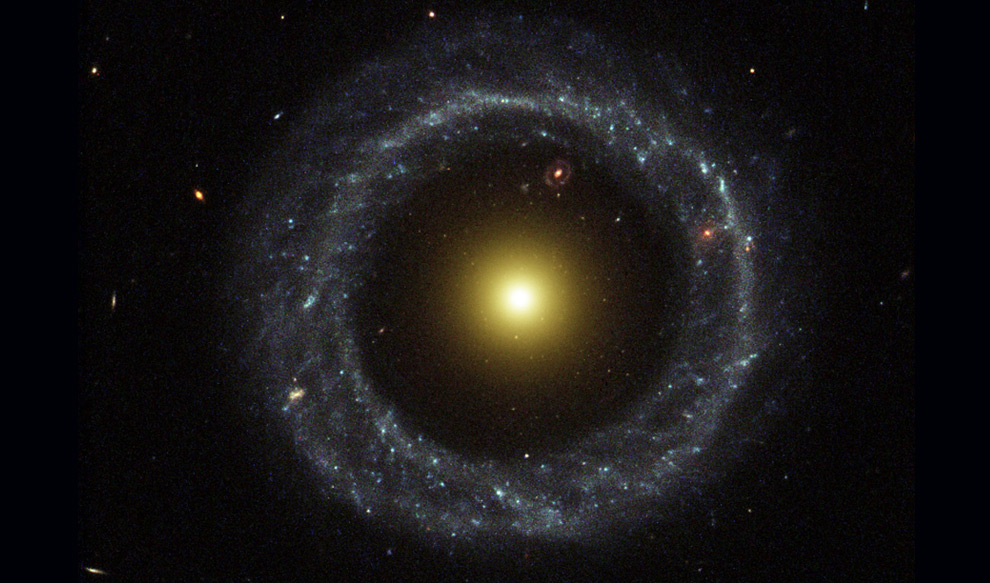
Hoags Object
|
Daimo B
Member
Registered: 20th Mar 00
User status: Offline
|
Thats it, i didn't think either craft were due to enter the Heliosheath until 2010?
[Edited on 13-08-2009 by VXR]
|
FruitBooTeR
Member
Registered: 18th Jan 07
Location: Wolverhampton Drives: S15
User status: Offline
|
Not 'IN' space but love this pik, had it as my desktop for ages 

|
alan-g-w
Member
Registered: 9th Nov 07
Location: Glasgow
User status: Offline
|
The Eagle Nebula is a young open cluster of stars in the constellation Serpens, discovered by Jean-Philippe de Cheseaux in 1745-46. Its name derives from its shape which is reminiscent of an eagle. It is the subject of a famous photograph by the Hubble Space Telescope, which shows pillars of star-forming gas and dust within the nebula.
The Eagle Nebula is part of a diffuse emission nebula, or H II region. This region of active current star formation is about 6,500 light-years distant. The tower of gas that can be seen coming off the nebula is approximately 57 trillion miles (97 trillion km) high. 
The brightest star in the nebula has an apparent magnitude of +8.24, easily visible with good binoculars.
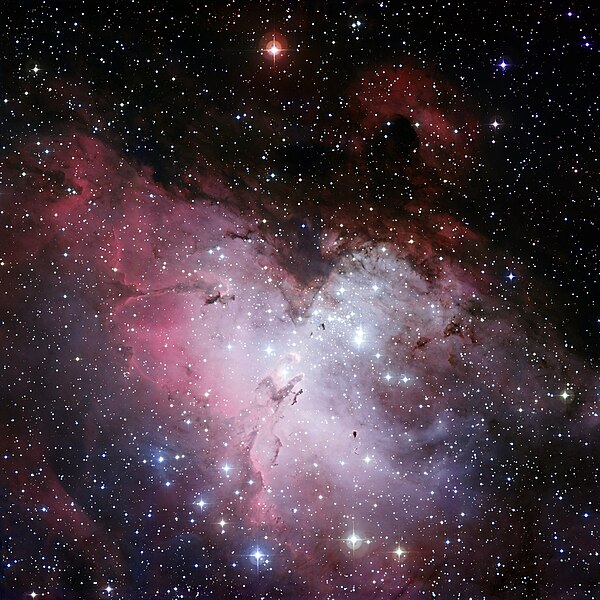
'Pillars of Creation' region
Images made in 1995 by Jeff Hester and Paul Scowen using the Hubble Space Telescope greatly improved scientific understanding of processes inside the nebula. One of these, a famous photograph known as the "Pillars of Creation", depicts a large region of star formation. Its small dark areas are believed to be protostars. The pillar structure of the region resembles that of a much larger star formation region, imaged with the Spitzer Space Telescope in 2005, in Cassiopeia, which is designated W5 and has been dubbed the "Mountains of Creation".
Combinations of X-ray images from the Chandra observatory with Hubble's "Pillars" image have shown that X-ray sources (from young stars) do not coincide with the pillars, but instead randomly dot the area.
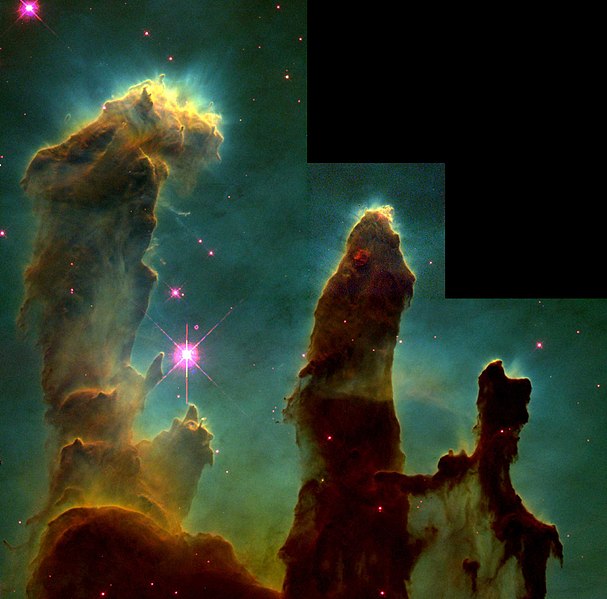
All lifted from Wiki.
|
Leighton
Member
 Registered: 21st Feb 01
Registered: 21st Feb 01
Location: Liverpool
User status: Offline
|
You would think they would of put a colour camera on that thing on mars 
|
Pip308
Member
Registered: 25th Oct 07
Location: Basingstoke Drives: Audi A4 Avant, Mk1 Caddy
User status: Offline
|

|
sand-eel
Member
Registered: 15th Mar 07
Location: carluke/braidwood--IRNBRULAND
User status: Offline
|
50million light years away....just rediculous isn't it.
|
Wrighty
Member
Registered: 28th Feb 04
Location: Howden
User status: Offline
|
yep, and to think these nebulae, galaxys etc are all lightyears across in distance in these pics too
when we look into the night sky, we can only see whats in our milky way..and then i think we are only going to be here a few years compared to the universe..and thats it, its a miracle we are here, we are born, we die, and get told what to do inbetween. thats life, thats all there is to it..
|
Neo
Member
Registered: 20th Feb 07
Location: Essex
User status: Offline
|

Helix Nebula
ocated in the constellation of Aquarius, the Helix is our closest planetary nebula at only 450 light years distance. It is so close that it can be telescopically seen shifting one side to the other in front of the more distant background stars as the earth moves around the sun- a phenomenon called parallax. Parallax measurements are used to trigonometrically deduce distance between an object in space and the earth. A planetary nebula results when a red giant star, near the ends of it's productive life, sheds its outer layers into space and creates a breathtaking shell of surrounding gas that early visual astronomers likened to the disks of planets. This planetary spans approximately 1.5 light years and is still expanding. The name associated with the Helix is derived from the cork-screw appearance that resulted from the spin induced by the nebula's central star as its outer layers were thrown off into the surrounding vacuum of space.

Bodes Nebula
Draw a line from the left bottom star through the top right star of the Big Dipper's bowl then extend it roughly the same distance upward and you'll see the location of this magnificent winter galaxy, the eighty first entry in Charles Messier's catalog, known as M-81. It was first identified in the late 1700's by German astronomer Johann Bode, so it's also sometimes known as Bode's Nebula. Located only 12 million light years from Earth, a relative stone's throw by intergalactic distances, M-81 is one of the brightest galaxies visible from in the night sky and can be spotted from a dark site, far from any city lights, without need for any optical assistance. M-81 exhibits rich, symmetrical spiral arms and numerous dark lanes of dust both of which may be evidence of interaction with its companion galaxy, M-82.

M42 Great Orion
[Edited on 13-08-2009 by Neo]
|
Daimo B
Member
Registered: 20th Mar 00
User status: Offline
|
Whats weirder is...
All those stars you look up and see. theres a good chance they are not there anymore.
Light travels at x7 times round the earth, per second yeah... Well all those suns are a dammmmm site further away, it would take light sometimes billions, trillions of years to reach us at light speed (given that light from the sun is travelling towards us)....
So, if the light takes billions/trillions of years to reach us, theres a good chance that most of the suns are not actually there anymore, probably supernova'd, and we're still getting the light image from those suns...
Even though the stars/suns we are seeing, could have died and dissapeared millions of years ago. As the lights not got here yet, to us, they are still there.
I tried seperating that "sun scale" chart the other day, i failed. I might do it again tonight.
|















